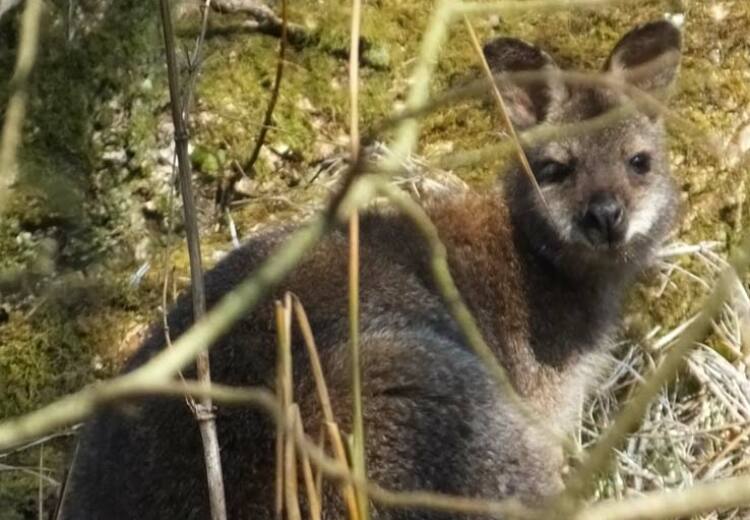I THINK I counted about ten earthworms at my allotment plot last year. Though strange, I figured that with all the digging and organic material I was adding to the soil that it wouldn’t be long before worms would be spilling out of my beds.
But it’s now the beginning of June and I can honestly say that I haven’t seen a single worm on my plot this year. Others noticed the absence of worms on their plots too and one member even decided to delve further into this mystery.
As a result, we at the allotment have just been given the bad news of an unwelcome foreigner in Laxey. Though suspected last year, DEFA have formally identified that we have the New Zealand flatworm on site.
Well, what on earth is a New Zealand flatworm? If you haven’t heard of it before, it may be that you will sometime soon. Favouring cool and wet climates, it has emigrated from New Zealand and made itself at home across the northern British Isles including the Isle of Man.
It’s generally brought in to peoples’ gardens by plants purchased from gardening centres or even from plants given by friends and neighbours. The worms lurk in the root-balls of potted plants or even stuck to the bottom of the pots themselves and will spread from there and into your soil like wildfire.
If even one gets on your land you can expect an entire population to descend from it. New Zealand Flatworms are asexual and so do not need to mate in order to lay their little blackcurrant-like eggs.
Well, I suppose the good news is that this pest is carnivorous and so it doesn’t directly eat or damage our plants.
The really bad news is that they can devour so many earthworms in a particular area that the result is water-logging and compaction of the soil. Their worm-bingeing can also lead to a lack of food for other wildlife such as birds and hedgehogs.
With each flatworm gobbling up several earthworms per week, tending to target the biggest ones first, their undisrupted feasting can be so terrible that it can cause targeted extinctions of Earthworms as seen in parts of Northern Ireland.
Total eradication of these pests is nearly impossible once they’ve gotten a foothold, but they can be killed on an individual basis. Each plotholder will keep a small container filled with rock salt handy and toss any flatworms that they find directly into it where they’ll quickly shrivel up and ‘kick the bucket’.
Hopefully, with each plot keeping the numbers down, we can get them down to a manageable number and the earthworms might make a bit of a recovery.
We don’t know how long these creatures have been on our site but I for one have seen one as early as May 2010 – though to be honest I didn’t know what it was and just assumed it was native. But the fact that we’ve designated several central plots as ‘boggy’ from the get-go indicates that they may have been in the field for some time.
In any case, all we can do now is to grin and bear it. Due to the fact that material is no longer being pulled down from the surface and into the soil means that ‘no-dig’ gardening will not be an option for us. It also means that everyone will need to actively dig in a good amount of organic material each year to keep the earth well drained and fertile enough for gardening.
Though so far only officially reported only on the Isle of Man in Laxey, I have now heard rumour that New Zealand flatworms have invaded gardens from other parts of the Island. Slimy and brown in colour, they have a creamy rippled edge and are often found curled up in a circle the size of a fifty pence piece.
But since they are really only active at night, you might not ever see them unless you look in dark, damp areas such as under rocks and plant pots. The usual indication of their presence, however, is a general absence of earthworms in the soil.
We have also found that dead grass in the bottom field of the allotment is not being absorbed back into the ground and is instead drying out and lying in a thatch at the base of new grass. This may also be an indication of the flatworm since normally earthworms will help to bring this rich plant material down into the ground.
Though this has not been very happy news with us gardening at the site, it’s not really the end of the world. Everyone’s plot is springing into new growth and both my plants and soil look healthy and rich. Through active management of the pest and the earth we can continue to improve the situation and to help encourage earthworms to make a comeback.
In a world where we exchange exotic house-plants and vegetable varieties across oceans and continents it’s not really a surprise that unwanted wildlife will hitch a ride as well. Gardeners across Ireland and Scotland have been learning to live with the New Zealand flatworm over the last forty-odd years and now it’s our turn to do the same.
If you think that you may have New Zealand flatworms in your garden, please contact DEFA for further identification and advice: defa@gov.im








